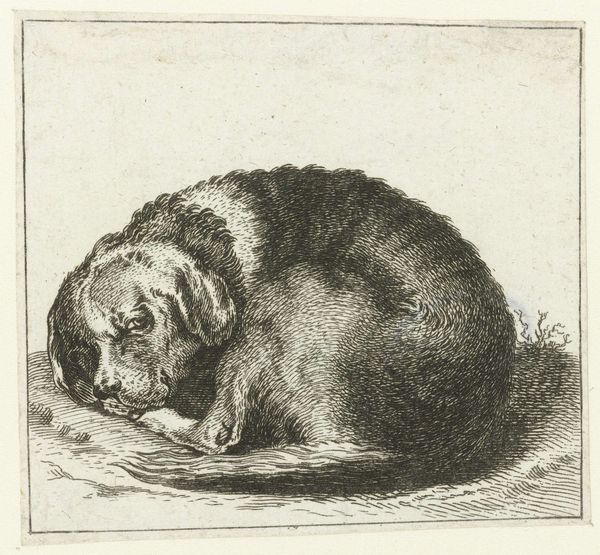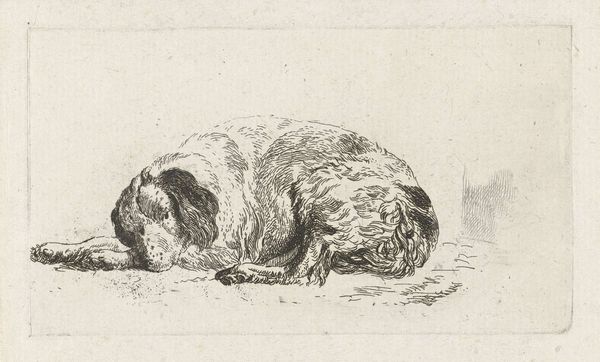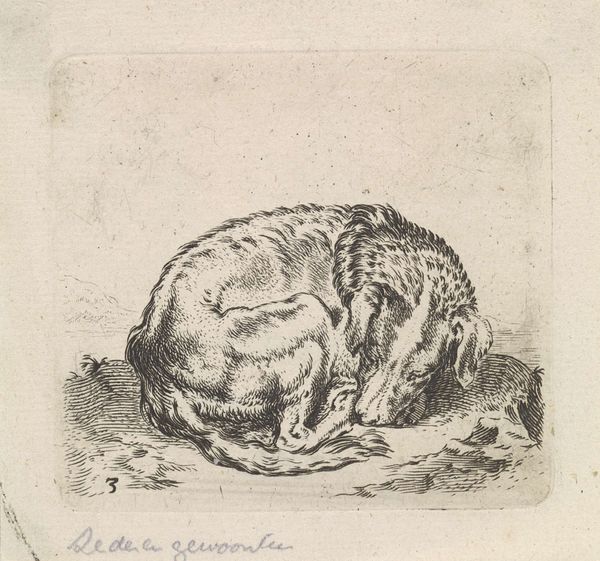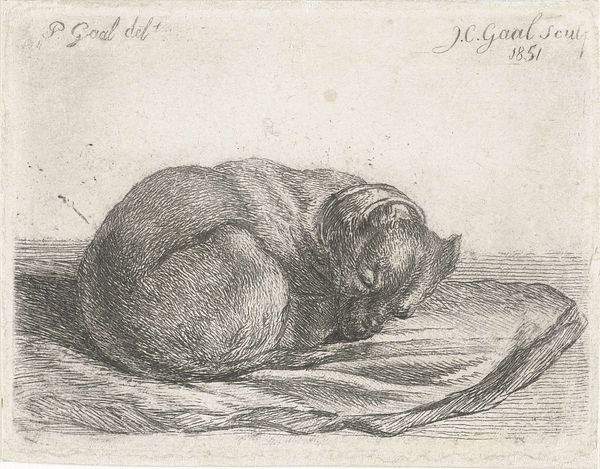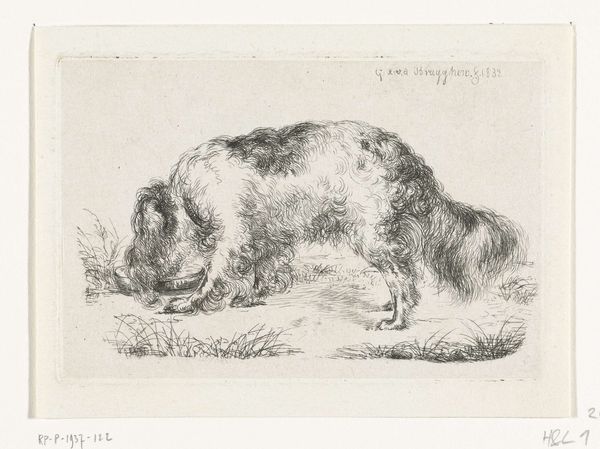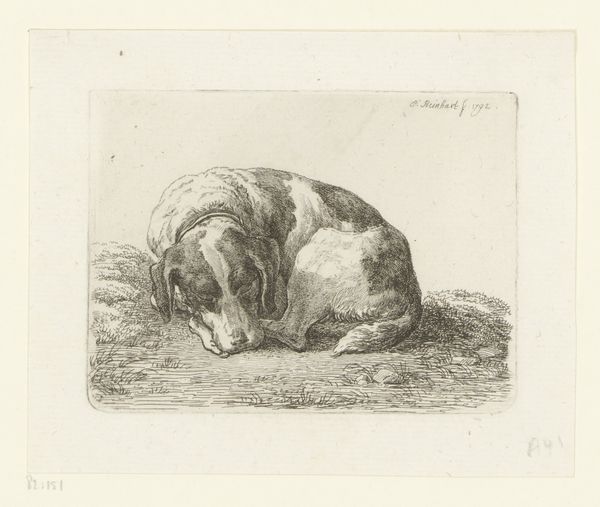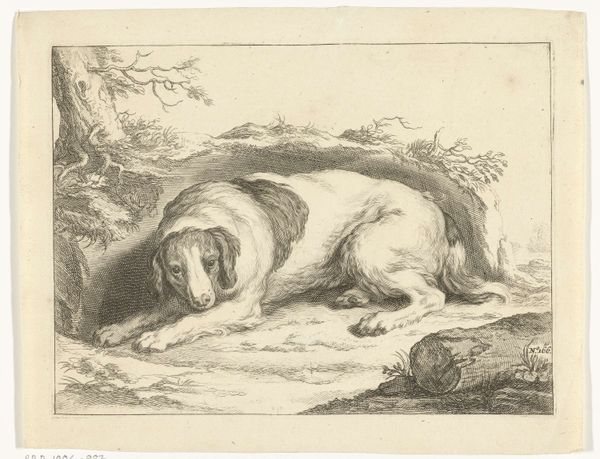
drawing, etching
#
drawing
#
baroque
#
dutch-golden-age
#
etching
#
dog
#
figuration
#
form
#
line
#
realism
Dimensions: height 81 mm, width 72 mm
Copyright: Rijks Museum: Open Domain
Cornelis Saftleven made this print of a resting dog in the 17th century, using the etching process. In this technique, a metal plate is coated with a waxy, acid-resistant substance called a 'ground.' The artist then draws through the ground with a needle, exposing the metal. When the plate is dipped in acid, the exposed lines are etched, creating grooves. The depth of these grooves determines the darkness of the lines in the final print. Multiple dips in the acid bath allows for variation, creating tonal depth. Saftleven's etching skillfully captures the texture of the dog’s fur, and the soft contours of its body. The etched lines, close together in some areas and more spread out in others, create a sense of depth. The printmaking process itself, with its reliance on skilled labor and industrial materials like metal and acid, offers a fascinating contrast to the humble subject of the artwork. Ultimately, it's the combination of materials, process, and social context that make this small print so compelling.
Comments
No comments
Be the first to comment and join the conversation on the ultimate creative platform.
